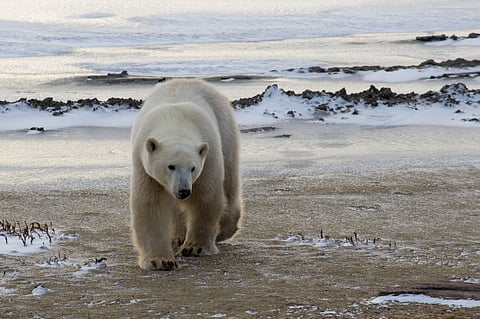
- Destinations
- Experiences
- Stay
- What's new
- Editor’s Picks
- Responsible Tourism
- CampaignsCampaigns
- Subscribe

What does one do when even the polar bear capital of the world struggles to protect its bears Clearly, some out-of-the-box thinking is the need of the hour.
According to the IUCN, only 2,600 polar bears exist today, of which 1,500 reside in Canada alone. The small town of Churchill in Canada&rsquos Manitoba province has long been known as the polar bear capital of the world&mdashbut it may no longer be a haven for these white predators. The climate crisis has led to longer periods of starvation among the bears in the lead-up to winter. The Guardian reports that the erratic and delayed formation of ice sheets on the Hudson Bay in recent years has meant that the bears go without food for as many as 180 days. Over the past decade, the ice sheets have also been reported to be breaking up much earlier than usual has led to a significant curtailing of the hunting period of polar bears in winter. These developments have led to several adverse effects in the polar-bear population in the region.
Still, tourism continues to drive Churchill&rsquos economy in a major way. A significant contributor to the tourism industry are the polar bear viewing and spotting tours that are conducted on gigantic, sci-fi, spacecraft-like tundra vehicles called hulkings. For years, these vehicles have run on diesel, as a result of which noise and air pollution, as well as global warming, have been major concerns for environmentalists here.
However, it seems that these vehicles are finally on their way out. Frontiers North Adventures, a travel operator in Churchill, has launched the Electric Vehicle Tundra Buggy® (EV Tundra Buggy), a battery-operated electric vehicle in late November. The vehicle, which has been built in collaboration with Red River University, is expected to conduct three days worth of tours in extremely frigid conditions on a single cycle of charge. Frontiers North Adventures is now aiming to replace its existing fleet of diesel hulkings with these electric vehicles.
What&rsquos even more encouraging to note is that the drive to replace the entire fleet of diesel vehicles will lead to a reduction of more than 3,600 tons of carbon dioxide emissions over the next 25 years. This welcome move is surely an indicator of the kind of environment friendly measures that should become the norm instead of the exception. And while experts opine that innovative moves such as these cannot be the only solutions to the effects of climate crisis and call for more radical solutions, they do express hope that these urgent measures are able to impress upon people the need for significant behavioural change when it comes to addressing climate crisis and its adverse effects&mdashand make the planet more sustainable in the process.
